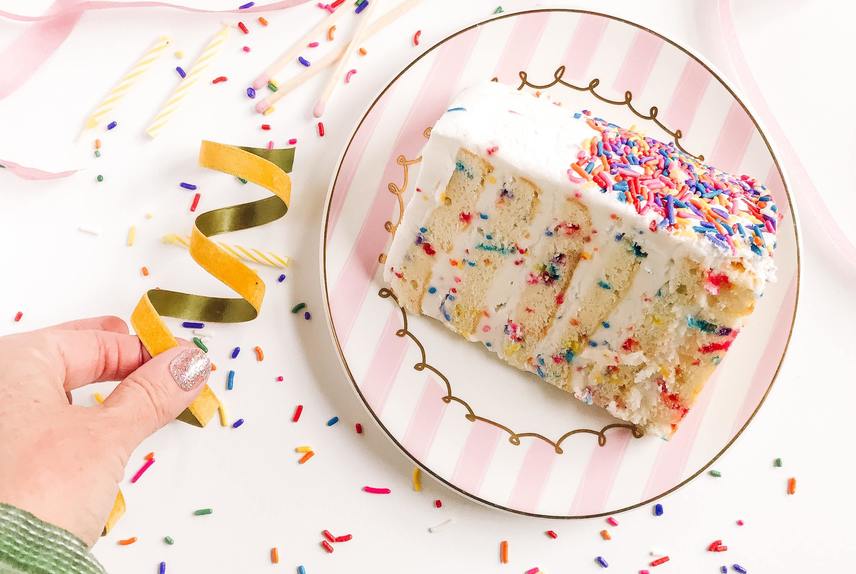One of the most common questions within the beauty sphere involves how to layer skincare products. It’s right up there with “Do I need a toner?” or “Won’t oils clog my pores?” It’s certainly an important question, especially when it’s hard to discern between fact vs. fiction these days. Not to mention products often feature misleading labels (i.e. an oil labeled as a serum), which adds to the confusion.
The age-old school of thought tells you that products should go on “thinnest to thickest,” but you can’t strictly rely on that rule, especially when you’re using both water and oil-based products. Remember: our skin is a smart, protective shield that works hard to keep things out, so following the right sequence increases our chances of getting ingredients in and doing the job they need to do.
So, speaking of oil, when should you apply it? Before or after your moisturizer? If you’ve pondered this question, or still don’t know for sure, read on.
First things first, after cleansing as step 1, apply toner (if you use one, that is)
Modern day toners can be versatile products that offer great benefits (think, anti-inflammatory like SMD’s Antioxidant Toning Mist), depending on your needs. They have come a long way from their old astringent selves and were used to help balance the skin’s pH after cleansing (cleansers today are pH balanced and are not designed to strip your skin). Toners are fast penetrating, usually water- based, and help prep the skin for the products that follow.
If you don’t use a toner, jump straight to Step 3!
Step 3: Serum
As many of us know, serums are water-based, super concentrated and nutrient-rich treatments. For that reason alone, and the fact that they usually don’t come cheap, we want to make sure this product stays as close to our skin as possible.
At night, a product such as SMD’s Retinol + Bakuchiol Power Serum can be applied in this step.
Step 4: Eye Cream
The peri-orbital area or area around the eye is extremely thin. It’s the thinnest part of our face, aside from our lips, and we want to make sure it gets extra love and care. “Diligent use of an eye cream can help improve skin quality, prevent skin laxity and the formation of wrinkles”, says Dr. Shala Fardin.
Most eye creams are a mix of oil and water and are water-based. They are formulated especially for the delicate skin around the eyes. Take SMD’s Retinol Lift Eye Cream + for example. This product is water-based and designed with Retinol at a level that is safe and non-sensitizing for the eye area.
Step 5: Spot Treatment (if you use one)
Targeted treatments in the form of prescription medications and acne spot treatments need to be applied very close to the skin order for the active ingredients to get to work – and work effectively.
Take Benzoyl Peroxide, for example, which is an ingredient that is particularly good at fighting acne by killing bacteria underneath the skin and diminishing excess sebum. If you apply this over your moisturizer it will not be nearly as effective.
Step 6: Moisturizer
Like eye creams, many moisturizers are a mix of oil and water and are water-based. Traditional moisturizers have a cocktail of the following umbrella ingredients: humectants, occlusives, and emollients. Humectants like Hyaluronic Acid or Glycerin will attract water, emollients like Squalane or Ceramides condition and soften the skin, and occlusives like Dimethicone seal everything in so your skin can stay hydrated and smooth longer.
SMD’s Age Defy Moisturizers like Lipid Rich or Restorative are great examples of everything you need in a moisturizer, but more, with the inclusion of antioxidants to help soothe and calm the skin.
Step 7: Oil
Facial oils should always be applied on top of your moisturizer, and this isn’t up for debate. Science says so. Not only do oils have a higher molecular weight than any moisturizer, oils are impermeable and they are the most occlusive. If you put oil on earlier in your routine, your water-based products will be left hung out to dry, literally. Not only does water evaporate, but it will not be able to penetrate the oil barrier!
Oils flourish on the top layers of your skin (our skin barrier is made of lipids/fats) and water thrives inside your skin — in cell walls and inter-cellular spaces. The water-based products you start with help flush skin cells with hydration. And oil makes an excellent topper or gatekeeper, which helps reduce trans-epidermal-water loss.
As a note: watch out for oils parading as serums. (i.e. Vintner’s Daughter Active Botanical Serum or Ranavat’s Brightening Saffron Serum). These products should be applied last.
Step 8: Sunscreen
In the morning, apply SPF at the end of your routine. If you applied an oil as step 7, let it fully absorb before moving on to sunscreen. Or better yet, save the oil for your nighttime regimen.
Also, keep in mind moisturizers with SPF are not enough, and bonus points if you reapply mineral-powder sunscreen throughout the day (i.e. SMD’s Mattifying Mineral Power Sunscreen SPF 30).
The right sequence of layering your skincare products doesn’t have to be complicated. And by no means are we suggesting that you should have an 8-step routine. We just want to cover all the bases as the products we use are unique to each individual. That being said, we’re coming to you from a dermatologist’s office so we believe that less-is-more. Your skin is a marvelous and efficient system, so let it do its thing. With proper support, you can keep your skin healthy and glowing for years to come.
By Maya
Reviewed by Dr. Smith & Fardin

